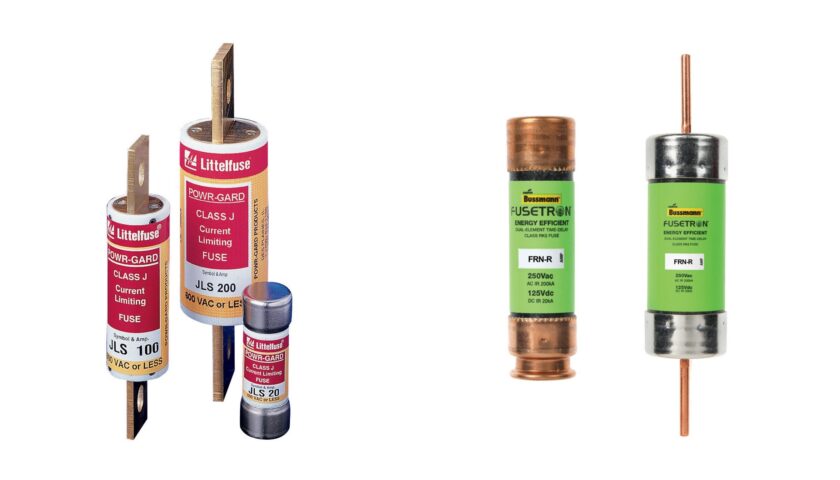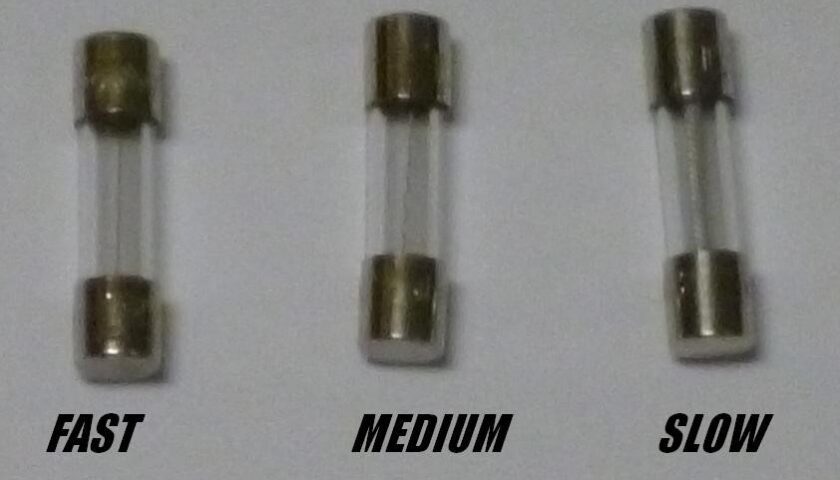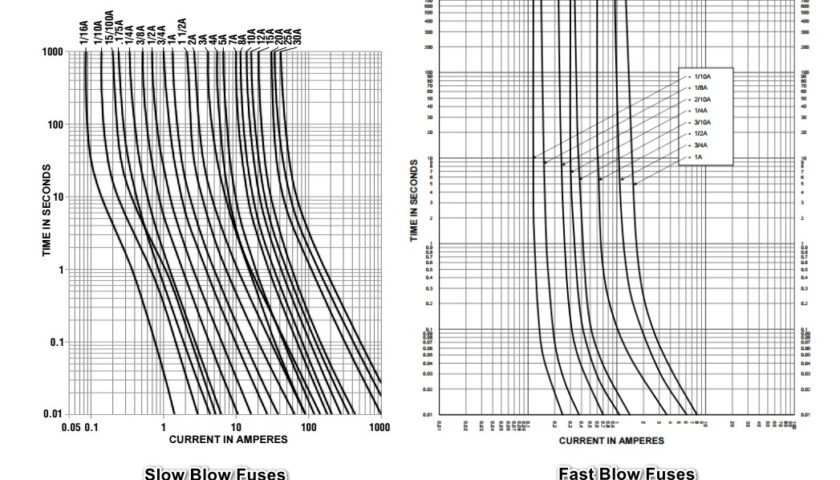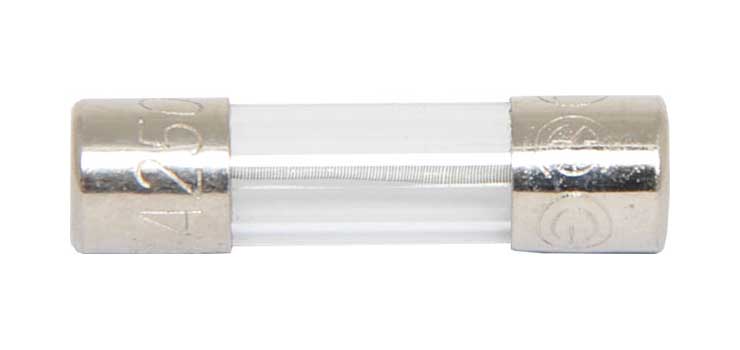Remember not long ago we introduced fusible links that are mostly used in automotive alternators? This time we’re going to cover slow blow fuses which are extensively installed for solenoids, transformers, and motors.
Contents
Slow Blow Fuse vs Fast Blow Fuse
How do Slow Blow Fuses Work?

A glass ferrule fuse is overloaded and blown
Slow blow fuses, also known as time-delay fuses or slo-blo fuses, can protect against relatively sustained overloads and short circuits, keeping the circuit intact when a temporary surge current is encountered.
Some electrical equipment has a temporary high transient current at the moment of switching (startup current) that is considerably higher than their normal working current. Although the peak current is very high, it appears for a short time. We call it inrush current or surge current.
Typical fuses cannot withstand such kind of current and the machine could cease to operate from the very beginning. On the other hand, if you choose fuses of a higher current rating the machinery is not secure when overloaded. That’s why time-delay fuses come into play.
Types of Slow Blow Fuses
Note that the below list of fuse types does not have to be slow fuses. There could be a Class J fuse characterized as a fast-acting fuse.
Slow Blow Class CC Fuses
Because Class CC fuses lack an indicator for spotting a blown fuse, they are commonly used in conjunction with an indicating fuse block or cover. Their primary uses include branch circuits, control circuits, lights, transformers, and general loads.

They are one of the smallest current-limiting fuses for branch circuits. Besides, most Class CC fuses have a rejection feature that suits the rejection fuse block, which prevents fuses of lower rating i.e. midget fuses, Class H fuses being installed.
Midget Fuses

Midget fuses are used as supplementary circuit protection for the primary branch circuit fuses. As the name denotes, they have lower interrupting ratings (the maximum available short-circuit current) and can only provide backup overcurrent protection rather than current-limiting.
Time Delay Class J and R Fuses
Both Class J and R fuses are suitable for DC ratings. Compared to Class R fuses which generally have a 200kA RMS interrupting rating, 300kA RMS spec can be found with Class J fuses.

Class R fuses must be branded “Current Limiting” and may also be labeled “Time Delay,” which implies they pass the optional time-delay test by not opening in less than 10 seconds at 500 percent of the fuse ampere rating.
Dual Element Time Delay Fuses

Dual element time-delay fuses are the most popular type of slow blow fuses nowadays. Unlike single element fuses, dual-element fuses consist of two unique elements: short-circuit element and the overloads element. All dual-element fuses are slo-blo fuses. The two elements are connected in series and surrounded by arc quenching material. A dual-element time-delay fuse functions in two conditions.
Persistent Overload
If thermal overloads, relays, or contacts fail to function, the dual-element fuses will act independently, providing “back-up” safety for the motor. The trigger spring fractures the calibrated fusing alloy and releases the connector under sustained overload circumstances because of excess heat, resulting in a fuse opening.
Circuit-level Fault Current
The faulty current causes the confined area of the short-circuit element to soon evaporate and begin arcing. Arcs burn away the element, leading to longer arcs that reduce current, with the arc-quenching filler assisting in extinguishing the arcs and forcing the current to zero.
As a result of the short-circuit operation, the particular small granular arc-quenching material plays a vital role in the interruption process by assisting in quenching the arcs by collecting their thermal energy and melting to produce an insulating barrier substance known as fulgurite.
Slow Blow Fuse vs Fast Blow Fuse: How to Tell
Slow blow fuses are specified with respect to the opening time as seen by normal fast-blow fuses, which give away as soon as surge current is detected. You should never replace a slow blow fuse with a fast blow type, and vice versa. So it’s of great importance to differentiate from them before damaging your home appliances or your car motor.
First, fuses have labels on them indicating they are a fast-acting type or a time-delay type; “T” or “S” for time-delay fuses, “TT” for very slow blow fuses, “F” for fast-blow fuses, “FF” for very fast-blow fuses, and “M” for medium acting fuses. If the label is lost, look up for engraved marking on the housing of the fuse.
Secondly, inspect the glass tube. Fast blow fuses have a thin wire inside the tube while for slow blow fuses the wire filament could be much thicker and connected with a spring.

The above steps should be enough clear to identify slow blow fuse vs fast blow fuse. If neither way is accessible try searching for the Average Time vs. Current Curve diagram of your fuse on the internet. A time-current curve is displayed as a continuous line for any chosen fuse, reflecting the average melting time in seconds under a range of overcurrent situations.

The time-current curve graph gives you a clear and direct prospect of the opening time when replacing a fuse. For a slo-blo fuse, the time difference across current amps is bigger than that of a fast blow fuse. So a fast-acting fuse has a steeper vertical time-current curve compared with a slow blow fuse. Also Read: HOW TO SEE MY GOOGLE REVIEWS
Discover More About Fuses












Discussion about this post